05/09/2021
The past few weekends have been dedicated to clearing up the mess that winter and early spring left for us. It is not certain that we will recover before next winter. Mowing the lawn, weeding and turning over flower gardens and trimming shrubs went well. Fallen branch round up and disposal took… is taking a bit longer. The vegetable garden and greenhouse assembly are still on the list, but we are getting there.
Cleaning debris out of the the western boundary stone fence proved to be exciting for a dense population of chipmunks. A wave of a 230 MPH back pack leaf blower wand cleared the stones, but also launched an indeterminate number of little fury flying objects off the wall, through the trees and on to a soft landing on a bed of leaves 200 feet down the slope. Chipmunk Tornado. A game the whole family can play.
Shooting, not collecting
The Ruger Model 77/44 has appeared on the pages of Real Guns numerous times. It is always fun to work with and write about new firearms, both new to the market and new to me, but those are not necessarily the same as those that routinely are taken to the range or selected for hunting. A handful of firearms represent the core of shooting activity, while a significantly larger number cycle through the shop and see transient use.
We review approximately fifty two firearms each year and we have been publishing for twenty four years. While we may have processed 1,248 firearms in review, we do not have ongoing applications for the same. A 460 Weatherby Mark V is an enjoyable rifle to work with, shoot and handload its powerful cartridge. But Maine is short on cape buffalo and elephant and, pretty much, tall grass. There would be no need for four similarly configured 270 WSM rifles. Firearms with an MSRP above $5000 make me nervous when in my possession.
A firearm in for review is on a three month to six month time table, so projects overlap. Research, photography, disassembly, shooting, handloading, shooting some more…. each phase results in questions and a effort to discover the answers. However, when the project is over, most are gone… but not all.
There are three firearms always on hand, that are suitable for Maine hunting, from medium size game through deer, black bear and moose. A Ruger M77 International in 7×57 Mauser, a Marlin 1895 in 45-70 Gov’t and a Ruger 77/44 44 Magnum, with the 44 Magnum seeing more and more use.
 Live in a state with predominately rolling hills and mountainous terrain, both covered in dense tree growth, populate it with deer and black bear and the occasional moose, and you will quickly see the appeal of the little Ruger 77/44 carbine. Chambered for the 44 Remington Magnum, with shooting distances inside 100 yards, the combination is fully capable of taking down any of the previously noted game.
Live in a state with predominately rolling hills and mountainous terrain, both covered in dense tree growth, populate it with deer and black bear and the occasional moose, and you will quickly see the appeal of the little Ruger 77/44 carbine. Chambered for the 44 Remington Magnum, with shooting distances inside 100 yards, the combination is fully capable of taking down any of the previously noted game.
Lightweight, compact and ready to go with metallic sights as shipped from the manufacturer, the scope was installed solely to measure accuracy potential at 100 yards, without evaluating my eyesight / open sight proficiency in the process.
|
Ruger 77/44 |
|
| Manufacturer | Ruger – Newport, NH |
| Model Number | 7416 |
| Type | Bolt Action |
| Caliber | 44 Remington Magnum |
| Mag Capacity | 4 |
| Barrel |
18.5″ 11/16″-24 Threads |
| Rifling | 1:20″ |
| Weight | 5.2 Lbs |
| Overall Length | 38.5″ |
| Stock Material | Walnut |
| Hardware | Blued Alloy Steel |
| Length of Pull | 13.5″ |
| Drop at comb | 0.5″ |
| Drop at heel | 1.0“ |
| Sights | Adjustable W/E |
| Scope Mounting | Ruger Rings – Included |
| Trigger Pull |
5 Lbs. 2 Oz. |
| Safety | 3 Position – Swing |
| MSRP | $999 |
Thanks to ammunition shortages
Like most Americans, ammunition shortages have a profound effect on what I shoot. Anticipation of this situation caused me to stock up on ammunition and reloading components for a selection
of cartridges. The 44 Magnum was one of the cartridges selected because it is used in multiple, frequently used, rifles and handguns.
Reloading components such as powder and primers are also used with other high use cartridges. Powder consumption is relatively modest and 44 Magnum brass is long lasting. If and when I run out of jacketed bullets, bullet casting gear and a few hundred pounds of alloy lead.
if not for dealing with tight ammunition supply, it would have remained upstaged by the 45-70 Gov’t or the flatter shooting 7x 57 Mauser. But then the reason for the 44 Magnum being in the line up is its pairing with the Ruger Model 77/44.
The Ruger Model 77/44 has been in production since 1997. After approximately fourteen years in production, the model is more than when it began, now accommodating a silencer or other muzzle device, it is still available with a walnut stock, deep bluing and quite accurate in the world of compact, lightweight woods rifles.
Unlike so many firearms produced today, the Model 77/44 has not been re-engineered, re-imagined into a polymer shadow of its former self and it still does not have a big ticket price tag.
Some piece that make the Ruger Model 77/44 interesting…
The bolt is constructed as two main assemblies, the bolt body, which is comprised of the bolt handle, locking lugs and striker related assembly and the non-rotating breech block. The breech block smoothly guides the bolt on cycling by riding in machined grooves in the walls of the receiver. It also holds a cartridge in battery and extracts with twin extractors.
The bolt handle is short, creating an action length… capacity, approximately midway between a 22 LR rimfire and the 223 Remington. As can be seen in the lower frame, locking lugs in battery are seated against the rear receiver ring.
The magazine is anchored aft at the latch assembly, which is part of the Ruger 77/44’s trigger guard and to the receiver at the front. This forms a rock solid retention system that releases easily when required. The rotary magazine holds four cartridges and is compact enough to hold spares in a jacket pocket.

CNC inletting and machine cut checkering are clean and concise, positively locating the barreled action to the bottom metal. The forward action screw passes through a brass ferrule which restricts longitudinal movement. The barrel channel is inletted to float the barrel with the exception of the speed bump at the forend.
The rear sight is drift adjustable for windage and screwdriver adjustable for elevation and indexed in 1″ at 25 yard increments. The brass bead front sight is mounted at the top of a post that is serrated to kill glare. Muzzle threads are 11/16″-24, permitting mounting brakes and silencers.
In addition to the metallic sights, the Ruger Model 77/44 has scalloped reliefs at three points on the receiver that accept proprietary scope rings included with the rifle. Alternatively, owners can use aftermarket rings from a variety and rails to suite their preferences and Picatinny rails are available that are affixed the the Ruger ring mounts.
How about that 44 Mag-a-num?
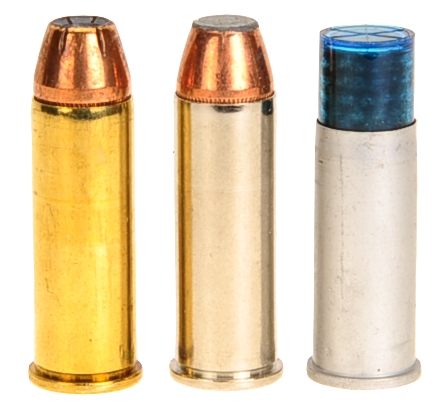
Pictured above, L-R, Hornady 180 grain JHP/XTP, Speer 270 grain JSP, CCI 170 pellet shot shell. The 44 Remington Magnum apparently is aging right along with me. When we were both very young in 1955, the 44 Remington Magnum was a beast, the most powerful handgun in the world. Perfect for shooting engine blocks out of bank robbers’ getaway cars and for shooting through brick walls. Now, from what I read, it is a marginal cartridge for rabbit hunting. Fortunately, feral hogs, deer and bear are competently and routinely dropped with the 44 Rem Mag. Apparently, they don’t read the same magazines.
The 44 Remington Magnum began life as Elmer Keith’s hot loads for the 44 Special. However, case length was increased from the 44 S&W Special’s 1.160″ to 1.285″ when the 44 Remington Magnum came into existence as a commercial cartridge. The increase in case length was not an accommodation for larger powder charges, but rather a way to prevent the then new 44 Magnum case in a less stout firearm chambered for the 44 Special.
The 44 Mag is an excellent hunting revolver cartridge, but an even better hunting rifle cartridge. A revolver has a comparatively short barrel that diminishes ballistic potential and generates muzzle bark well above the level of easy listening rock. A rifle’s longer sight radius takes less effort to achieve accurate sight alignment. Shot cantilevered, a revolver lacks gripping and support surfaces conducive to a steady hold. In numerical terms…
| Ammo | Bullet Weight Grains |
Muzzle Velocity FPS 4.6″ |
Muzzle Energy Ft/Lbs 4.6″ |
Muzzle Velocity FPS 18.5″ |
Muzzle Energy Ft/Lbs 18.5” |
Gain In FPS |
Gain in Ft-Lbs |
| Federal Classic | 180 | 1482 |
878 | 2110 |
1780 |
628 |
902 |
| Hornady Custom |
180 |
1535 |
942 |
2254 |
2031 |
719 | 1208 |
| Federal Fusion |
240 |
1333 |
947 |
1820 |
1766 |
487 |
819 |
| Speer Gold Dot |
270 |
1227 |
903 | 1593 |
1522 | 366 |
619 |
One of the good points with heavy bullets is that it does not take a huge increase in velocity for significant gains in kinetic energy and momentum. Additionally, the Ruger 77/44 handles cast as well as jacket bullets and both produce accurate results.
Overall
The Model 77/44 can shoot 1 1/4″ 100 yard, three shot groups with just about any factory ammunition in just about any bullet weight. I can repeatably handload 180 grain and 240 grain ammunition to sub MOA performance with ammunition shared with a Ruger 44 Magnum auto loader carbine.
Recoil is modest, muzzle blast… not bad. With a silencer in place, and with subsonic ammunition, heavy bullet penetration makes for an exceptionally quiet and exceptionally lethal firearm for special occasions such as coyote night hunting.
With a weight just an ounce over 5 pounds, and an overall length of 38.5″, it is ideal from moving about in the dense brush and tree growth in Maine’s rugged terrain. It is one hell of a rifle.

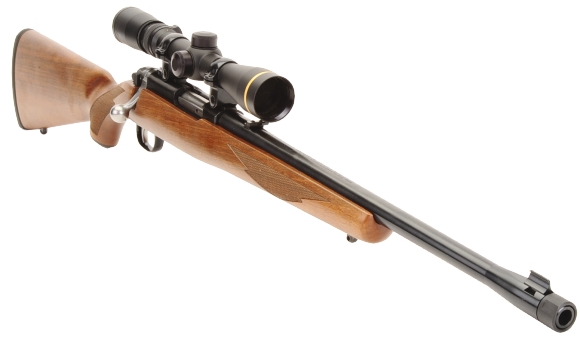
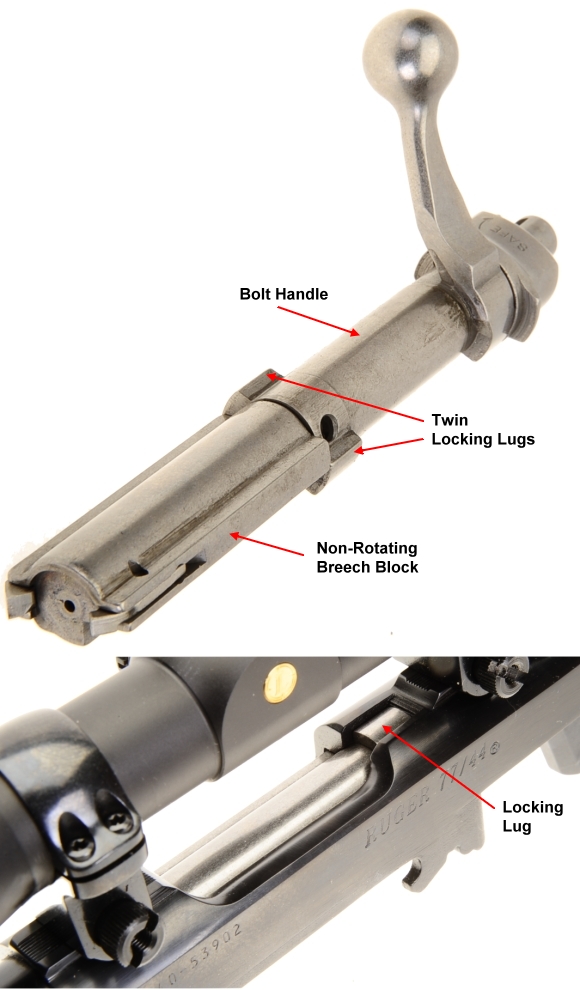
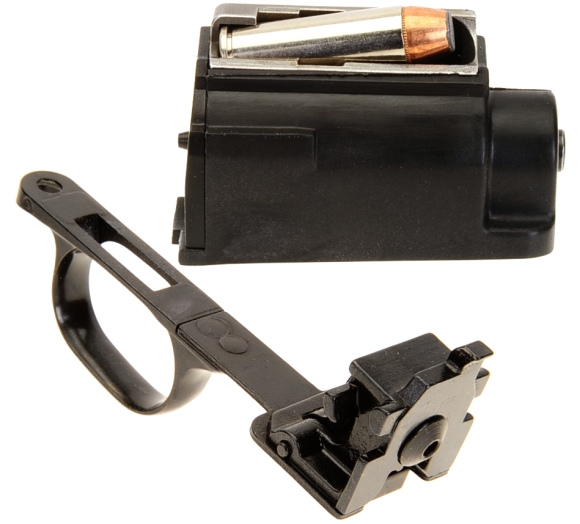
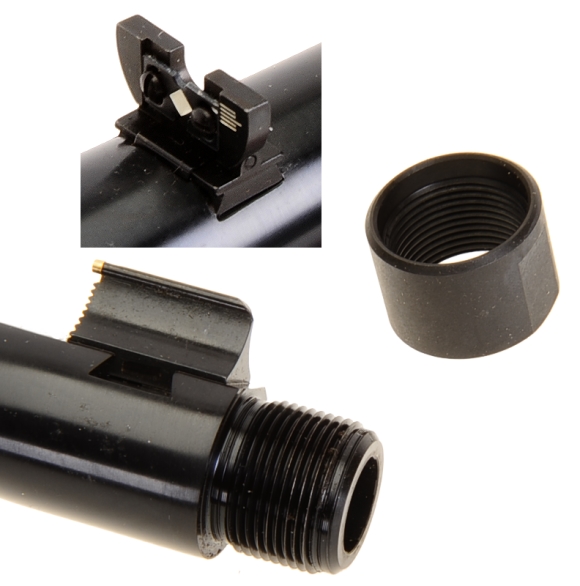
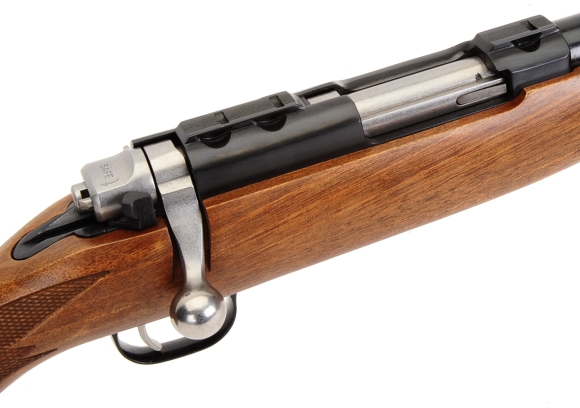

Email Notification